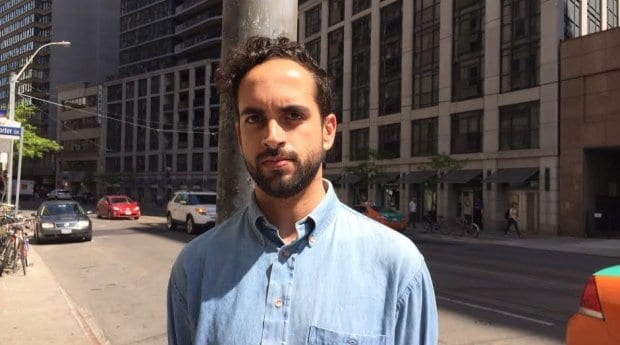For JP Larocque, the annual return of warm weather and green grass also heralds another, less pleasant, expectation: slurs yelled in his direction.
A few weeks ago, the journalist, director and panellist on 1 Girl 5 Gays was walking in the Dufferin and College area when someone inside a passing car screamed “faggot” at him.
“Even though we live in a really progressive city, there are certainly still pockets of intolerance,” Larocque says. “I think that when the weather gets warm and people feel that they are secure within their cars — and their windows are down — they feel they can behave like that.”
During his 15 years at the 519 Church Street Community Centre, anti-violence program coordinator Howard Shulman has witnessed a steady stream of street-harassment incidents in the Church-Wellesley Village. “They still do happen,” he says.
Shulman believes that because the Village is well known as a gay destination, it might attract would-be gaybashers looking for trouble, though harassment is not confined to the gaybourhood.
Toronto Police Service tracks hate crimes motivated by sexual orientation that occur in Toronto. In 2013, there were 23 incidents citywide — four more than occurred the previous year. Of the 23 incidents, 10 were assaults. In all the assaults, the victims, who ranged in age from 15 to 50, were subject to derogatory comments.
But the incidents were not confined to any one area of Toronto. Some took place in the far north and east ends of the city, while others were scattered throughout the downtown core.
The 519 Community Centre keeps its own statistics on verbal harassment in Toronto. Shulman recommends that victims try to remember the make of the car or the licence plate and report it to The 519. “For every hate crime that goes reported, there are usually nine that go unreported,” he notes.
Despite his brush with violence three years ago, Paul Winsor thinks the Village is still a safe place to live and work. “Outside our neighbourhood, would I feel quite comfortable being as open as I would be here?” he asks. “The answer is no.”
Winsor, a local florist, found himself unexpectedly in the news in 2011 when approximately 12 teenagers from nearby Jarvis Collegiate Institute drenched him in slushy drinks and threw ice at him in what was reported to be an attack motivated by Winsor’s sexual orientation.
Winsor has long since moved on. “This was a bunch of bad kids behaving badly,” he says. He thinks the administration at Jarvis Collegiate handled the situation well and that the incident was “blown out of proportion.”
Larocque believes the increasing visibility of LGBT people in media may help curb harassment. “I think the more people are exposed to gay people, gay characters and the gay lifestyle, they have less to fear and they are less likely to act that way,” he says.
Last year, on a busy day on the Danforth, a woman called Larocque a “faggot” as she drove by. “The people around me in general were all really horrified,” he says.


 Why you can trust Xtra
Why you can trust Xtra


